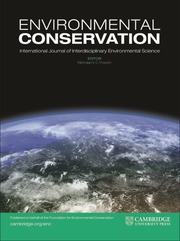No CrossRef data available.
Article contents
Exploring the role of socio-economic factors in European Green Deal performance
Published online by Cambridge University Press: 22 August 2025
Summary
The European Green Deal (EGD) provides a strategic framework for the European Union’s (EU) transition to climate neutrality by 2050. Yet, limited integration of socio-economic dimensions may hinder its long-term success and fairness. This study investigates the indirect impacts of socio-economic factors on EGD performance by constructing a Green Deal Performance Index (GDPI) using a multi-criteria decision-making approach for 22 EU countries over 2010–2020. We then apply an instrumental variable regression approach to estimate how emissions, shaped by structural socio-economic conditions, affect the GDPI. Our results show that the negative impact of emissions is nearly 47 times larger when socio-economic dynamics are ignored. These findings underscore the necessity of inclusive policymaking for achieving carbon neutrality, contributing to discussions on ensuring a just transition by highlighting the critical role of socio-economic dynamics. We also present implications for policymakers developing fair and equitable strategies promoting sustainability and social justice in this context.
Information
- Type
- Research Paper
- Information
- Copyright
- © The Author(s), 2025. Published by Cambridge University Press on behalf of Foundation for Environmental Conservation


